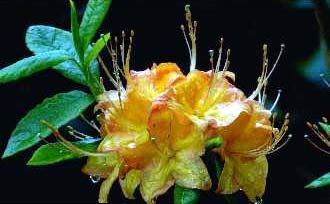The Japanese originated rock gardening over 1,000 years ago. They used the form, size, number, and placement of each stone to symbolize man’s world and man’s thoughts about his world. Today, the rock garden is an attractive alternative for those who prefer a setting with timeless appeal.
Originating in Japan, rock gardens became popular in England during the 18th century. An English architectural influence prevailed in American homes built in the 1920s and 1930s, and rock gardens became fashionable here, as well. The trend then waned in popularity until World War II, when American servicemen stationed in Japan saw the fresh, interesting way plants and stones were being used.
Careful Planning for Success
In addition to being attractive, rock gardens can help solve many landscaping problems. Man-made rock gardens are popular because the gardener possesses a greater degree of creative control. A careful planning process is necessary; evaluate all of the variables thoroughly. These include adapting the new design to the existing landscape, the sun, moisture, and heat requirements of certain plants, and whether to utilize water and wildlife in the garden. Choose the size, color, and texture of stones carefully to meet your particular rock garden needs. Additionally, careful construction of your rock garden is essential. Unless well done, your rock garden could become an eyesore. Be original and creative, but don't over-do!
Types of Rock Gardens
Miniature rock gardens are ideal for apartment dwellers. You can arrange herbs, cacti, or alpine plants in a variety of containers. Troughs, bowls, and tubs make a charming environment for the terrace. If you live in the city, you may build a rock garden on a home-constructed dry stone wall or artificial ledge. Rocks in peat beds, gardens built into raised stone beds, and gardens built into existing shelves are also attractive alternatives. In addition, well-chosen rock garden plants can transform a slope into a sea of color and texture.
Selecting Plants
Many plants thrive in a rock garden setting. While many people associate rock gardens only with delicate alpines, cacti and succulents are dominant in rock gardens in many parts of the country. Herbaceous plants, bulbs, corms, grasses, ferns, dwarf shrubs, and dwarf conifers have also been known to thrive in rock gardens.
Special care should be taken to examine the needs of the plants you choose for your rock garden. For instance, rocks containing calcium are good choices for plants requiring alkaline soil, and porous rocks hold moisture well so they are excellent choices for plants that require a moist environment.
While rocks that match their surroundings provide a natural, woodland look, rocks dissimilar from their surroundings can provide an interesting contrast. However, be sure your stones do not distract from the beauty of the plants, or vice versa.
Soil
Strive for a basic soil suitable for all the plants you choose. In general, rock garden plants require a moisture-retentive, neutral-pH soil. Good drainage is necessary. Mix together sand or fine gravel with loam and humus. Heavy soils may need more sand or gravel, and very light soils need clay. However, most rock garden plants are not particular about soil.
When concerned about the stability of your rock garden, a core of gravel and stones may be added to strengthen the structure and conserve soil. To prevent erosion, surround the boundaries with stones
Water
A pool of water may be of value for the pragmatic irrigation of your garden or for the environment it lends to fish and aquatic plants. A formal or informal pool, stream, fountain, or cascading waterfall would adorn almost any rock garden. Water lilies might also be a welcome addition to your rock garden, but they do need sun from midday until late afternoon.
Winterscapes
With careful prior planning, the rock garden can offer year-round treasures. Do not overlook the aesthetic quality of snow-clad rocks and evergreen plants. During extremely cold weather, however, you may want to provide protection for the more delicate alpine plants.
Rock Garden Guests
Butterflies and bees may feast on the pollen and nectar of your blooming plants, and a grass snake or two from a neighboring field may be appreciated for their willingness to eat mice. But some birds may attempt to plunder your lovely berries and blooms. You may want to protect your favorite species by covering them with fine-meshed netting.
TIPS: USE OF FERTILIZERS
You may wish to add fertilizer to your soil mixture, but remember that rock garden soils should not normally be very rich. Use fertilizers carefully.


